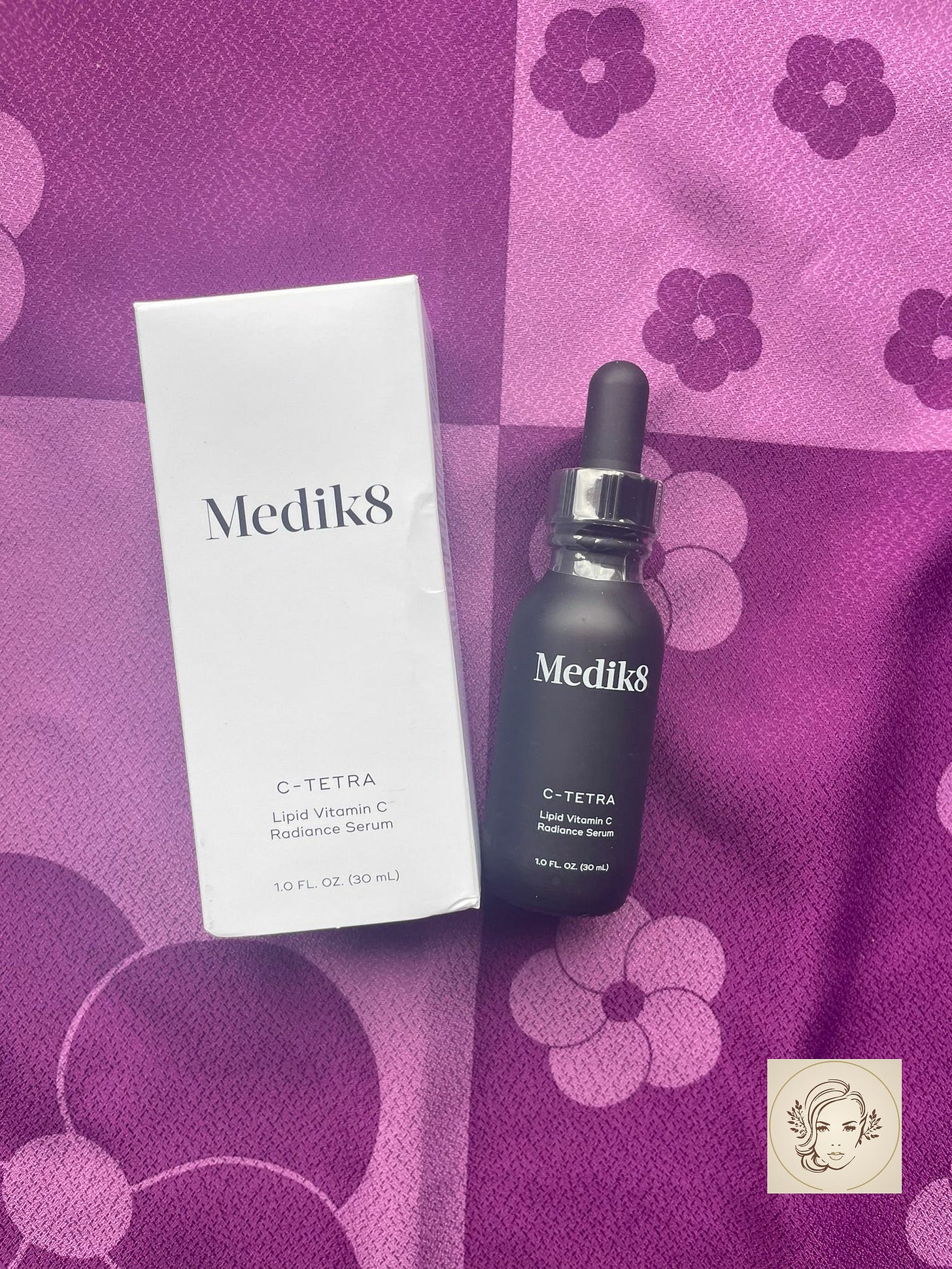What’s the Deal with Blue Light and Your Skin?
Yes, Your Screen Might Be Aging You (But It’s Not That Deep)
Wait, blue light is aging us now too?
There was a time when “blue light” just meant your phone was ruining your sleep.
Then it showed up in skincare, and now it’s being blamed for wrinkles, pigmentation, and premature aging, sometimes all at once.
If it feels like a lot, that’s because it is.
Blue light has gone the way of gluten: suddenly everywhere, vaguely threatening, and wrapped in marketing.
And you all know how I feel about gimmicky marketing.
Here’s what I’ll say upfront.
Yes, blue light has effects on our skin. Of course it does. Everything does!
But that doesn’t mean you absolutely need to wear sunscreen indoors, unplug your devices, or start treating your laptop like a tanning bed.
Like most things in skincare, the truth is less dramatic and more nuanced.
You can be aware of what it’s doing without spiraling into fear about screen time or daylight.
In this article, I’ll break down where blue light comes from, what it does (and doesn’t) do to your skin, and how I personally approach it.
I don’t live in fear of the sun or my monitor.
But I do think there are smart ways to protect your skin without giving up your entire lifestyle in the process.
What exactly is blue light, and where is it coming from?
Let’s get one thing straight.
Blue light isn’t new, and your phone didn’t invent it. It’s part of the visible light spectrum, sitting between about 400 and 500 nanometers. It’s often called high-energy visible (HEV) light.
That just means it has more energy than the rest of visible light, but it’s nowhere near the strength of ultraviolet.
Most of the blue light you’re exposed to doesn’t come from screens. It comes from the sun.
That’s always been true.
But because we now spend so much time staring at artificial sources like LED bulbs and monitors, the conversation has shifted indoors where you’re not getting the protective benefits of broad-spectrum sunlight.
Here’s why it matters.
While excess UV light is well known for its role in burning, isolated blue light has been linked to things like hyperpigmentation, oxidative stress, and possibly even collagen breakdown.
Most of that research is still early, but it’s enough to make people wonder if their screen time is silently aging them.
What’s often left out of the conversation is how different natural and artificial sources of blue light really are.
And not all light exposure is bad. Some of it is essential for health.
The key is understanding how to work with it, not against it.
Okay, what’s the research telling us?
There’s a reason blue light started showing up in skincare conversations.
Some early studies found that blue light exposure can trigger oxidative stress in the skin.
That means free radical formation, which can contribute to inflammation and the breakdown of collagen and elastin over time.
In darker skin tones, it’s also been linked to increased and prolonged pigmentation.
That part of the conversation deserves more attention, especially given how many clinical trials ignore skin of color altogether.
But here’s the part that rarely makes it into marketing: a lot of these studies are based on exposure models that don’t reflect real life.
Researchers are often using high-intensity artificial sources in controlled settings.
The kind of blue light coming off your laptop or phone isn’t strong enough to mimic that exactly.
So yes, it adds up over time.
No, it’s not necessarily frying your face off while you answer emails.
Also missing from the panic: the broader role of visible light in skin biology.
Sunlight isn’t just UV and danger.
Full spectrum exposure has its own benefits, and light at different wavelengths can be anti-inflammatory and restorative.
That includes the red and near-infrared light I use daily, which we’ll get into later.
My Relationship with Sunlight and Blue Light
I don’t avoid sunlight.
I get outside first thing every morning to get natural light in my eyes and set my circadian rhythm.
I use the DMinder app to track my vitamin D production, and I aim for somewhere between 5,000 and 10,000 IU a day depending on the season and where I am.
I also get regular bloodwork, so I’m not guessing.
If I need to supplement, I do, but it’s not my choice because I don’t find D3 supplements to be particularly effective (yes, even with K2).
I’m careful about burning, but I don’t slather sunscreen on my entire body every time I step outside.
I usually wear it on my face, partly because I use tretinoin and exfoliants, and partly because my face gets more consistent exposure.
But I also build a solar callus intentionally.
That process, along with consistent red light therapy and targeted skincare, helps my skin stay resilient.
Broad spectrum sunlight isn’t something I avoid. In fact, it’s something I value.
Natural light supports mitochondrial function and plays a role in skin health that goes far beyond vitamin D. The idea that any and all light exposure is bad for aging is reductive at best, and counterproductive at worst.
That said, I still take steps to protect my skin in a way that aligns with how I live.
Not because I’m afraid of light, but because I spend hours in front of screens, and I care about the long game.
Why I Still Protect Against Blue Light
Even though I’m not super concerned about the blue light coming off my screen causing dramatic skin damage, I still take a practical approach to protection.
I’m in front of a computer for hours every day, and I spend a lot of time outside too under high-intensity UV.
I’m already investing in my skin with active ingredients and targeted treatments, so it makes sense to take this extra step.
I use Supergoop’s Zinc Screen, a mineral sunscreen with zinc oxide that also contains iron oxides.
Zinc gives me reliable broad-spectrum protection, and iron oxides help block visible light, including blue light.
There’s clinical support for this, especially when it comes to managing or preventing hyperpigmentation.
This kind of protection isn’t necessary for everyone, but it’s worth considering if you deal with melasma or post-inflammatory pigmentation.
Or if you’re just in front of screens a lot and want to be proactive.
To clarify: I’m not wearing sunscreen indoors out of fear.
I’m using a formula that works for my skin and lifestyle.
The difference here is context.
What I Use and Do Daily
Because I spend so much time in front of screens, and because I already take my skin health seriously, I’ve built a few habits into my routine that help balance out blue light exposure.
None of these are extreme.
They just make sense for where I am in terms of skincare, work, and lifestyle.
During the day:
Like I mentioned above, I use Supergoop’s Zinc Screen that contains zinc oxide and iron oxides.
Zinc covers UVA and UVB, and iron oxides help filter visible light.
This combo offers a layer of protection that makes sense if you’re working under overhead LEDs or staring at a screen all day.
At night:
I wear Spectra 479 blue light blocking glasses once the sun sets.
They help support melatonin production, which matters for everything from sleep quality to recovery.
I also use the CurrentBody LED face mask and helmet daily.
This isn’t the same type of light we’re talking about when we discuss blue light damage.
These devices use red and near-infrared wavelengths, which have been shown to support collagen production, reduce inflammation, and improve skin barrier health.
In addition to that, I use the EMR Tek Inferno red light panel for 20 minutes at night.
It’s part of a broader approach I take to support mitochondrial health, skin resilience, and systemic inflammation.
Check out this article to learn more about these devices.
My Broader Approach to Anti-Aging (it’s not just skincare)
I care about aging well, but I’m not chasing every new trend.
I’ve built habits over years that support my skin, body, and overall health.
That includes skincare, but it’s not limited to products.
I’ve been lifting weights for over a decade.
Strength training, along with regular cardio and sauna sessions, has done more for my skin, sleep, and energy than any topical ever could.
I eat a balanced diet, stay hydrated, and prioritize recovery.
None of this is aesthetic-only. It’s foundational.
My skincare routine is simple but effective. I use tretinoin consistently.
For anyone not ready for that, Naturium’s retinol serum is a solid option.
It’s well-formulated and accessible.
I also use Mirror Skin’s Copper Elixir because GHK-cu is one of the most well-studied peptides for skin regeneration and firmness.
For antioxidant support, I like Medik8’s Tetra C, which uses a stable, lipid-soluble form of vitamin C that plays well with sensitive or compromised skin.
And to lock it all in, I like Medik8 Advanced Night Ceramide.
It’s peptide-heavy, barrier-supporting, and layers easily.
I also take supplements that support skin and system health.
Creatine, magnesium, L-theanine, and electrolytes are staples for me, and you can read more about that in this article.
This is a long game.
What you put on your skin matters.
What you do every day matters more.
The Bottom Line: should you worry about blue light?
Blue light has an effect on skin, but it’s not the villain it’s made out to be.
The kind of exposure that causes measurable damage is usually far more intense than what you’re getting from your phone.
That said, if you’re already investing in your skin, it makes sense to be thoughtful about how light fits into that picture.
I’m not avoiding sunlight. I’m not afraid of screens.
I get full spectrum light on purpose, use targeted skincare, and support my skin from the inside out.
Blue light protection is just one piece of a much bigger strategy, and it’s one that also includes stacking muscle mass, optimizing for micronutrient intake, managing my circadian rhythm, and supporting my mitochondrial health.
Here’s my ethos: Protect when it matters. Don’t panic. Keep living your life.
Simpler than you expected, right?
Cheers,















